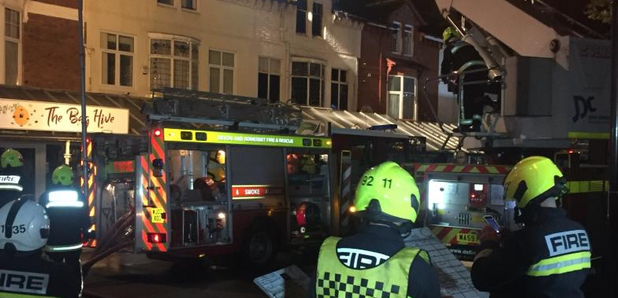On Air Now
Heart's Club Classics with Toby Anstis 7pm - 11pm
20 June 2019, 20:09 | Updated: 20 June 2019, 20:14

Devon and Somerset fire and rescue could undergo its biggest change for 50-years under new proposals announced on Wednesday 19th June.
The fire service claims that some stations attend only a handful of fires each year and have more resources than they need.
Most of the stations are in exactly the same place as they were half a century ago.
With housing estates popping up in different locations they want to change this and make sure stations are in the right place to meet demand.
The Service also needs to improve the reliability of the ‘on-call’ model which last year saw 20% of our on-call fire engines not available due to lack of crew.
To fund these changes, the Service will need to consider closing a number of low risk/low activity fire stations, removal of low risk/low activity fire engines and make some other changes to the way in which some fire engines are crewed.
The six options which will be presented to the Fire Authority are as follows:
Option 1 – Station closures
Station closures at Appledore, Ashburton, Budleigh Salterton, Colyton, Kingston, Porlock, Topsham* and Woolacombe.
*Note: One appliance from Topsham will be relocated to Middlemoor.
Option 2 – Station closures and removal of third appliances
Option 1, plus: Bridgwater, Taunton, Torquay and Yeovil Fire Stations all have three fire engines (two of which are crewed by ‘on call staff’). It is proposed that one of these ‘on call’ fire engines is removed from each of the four stations outlined.
Option 3 – Station closures, removal of third and second appliances
Option 2, plus: Crediton, Lynton, Martock and Totnes all have two fire engines. It is proposed that one of these fire engines is removed from each of the four stations outlined.
Option 4 – Station closures, removal of third and second appliances and change of status to day crewing
Option 3, plus: Barnstaple, Exmouth and Paignton currently have whole time crew on these fire stations 24/7.
It is proposed that the station still operates on a 24/7 basis but at night, the fire engines are crewed by ‘on call’ staff.
Option 5 – Station closures, removal of third and second appliances, change of status to day crewing and to on-call at night only
Option 4, plus: Brixham, Chard, Dartmouth, Frome, Honiton, Ilfracombe, Okehampton, Sidmouth, Tavistock, Teignmouth, Tiverton, Wellington, Wells and Williton Fire Stations all have two fire engines.
Rather than take away the second fire engine from these stations, it is proposed that the first fire engine is still crewed 24/7 with ‘on call’ staff but the second fire engine is crewed at night.
Option 6 - Station closures, removal of third and second appliances, change of status to day crewing, on-call at night only and introduction of day crewed roving appliances
Option 5, plus: It is proposed that six day-crewed fire engines (with trained Firefighters on the fire engine) are introduced which will be deployed in areas of forecasted high risk and/or where gaps in ‘on call’ cover is presented.
These firefighters will undertake additional fire prevention visits and building fire protection inspections to help make people and buildings safer.
They will be available to immediately respond to incidents and improve response times in the area located. Note: these 6 fire wholetime crewed (Full Time Equivalent) fire engines are in addition to the current wholetime fire stations that will be unaffected during the day.
These existing wholetime fire stations are: Bridgwater, Taunton, Yeovil, Exeter (Danes Castle), Exeter (Middlemoor), Barnstaple, Torquay, Paignton, Plymouth (Crownhill), Plymouth (Greenbank), Plymouth (Camels Head).
The proposals will be considered by Members of the Devon & Somerset Fire & Rescue Authority next week. Should the Authority agree, the proposals will then go forward for a 12 week public consultation from 1 July to 20 September 2019.
There will be a number of ways in which the public can give their views, including a series of public drop-in exhibitions.
Further information has been published on the website www.dsfire.gov.uk